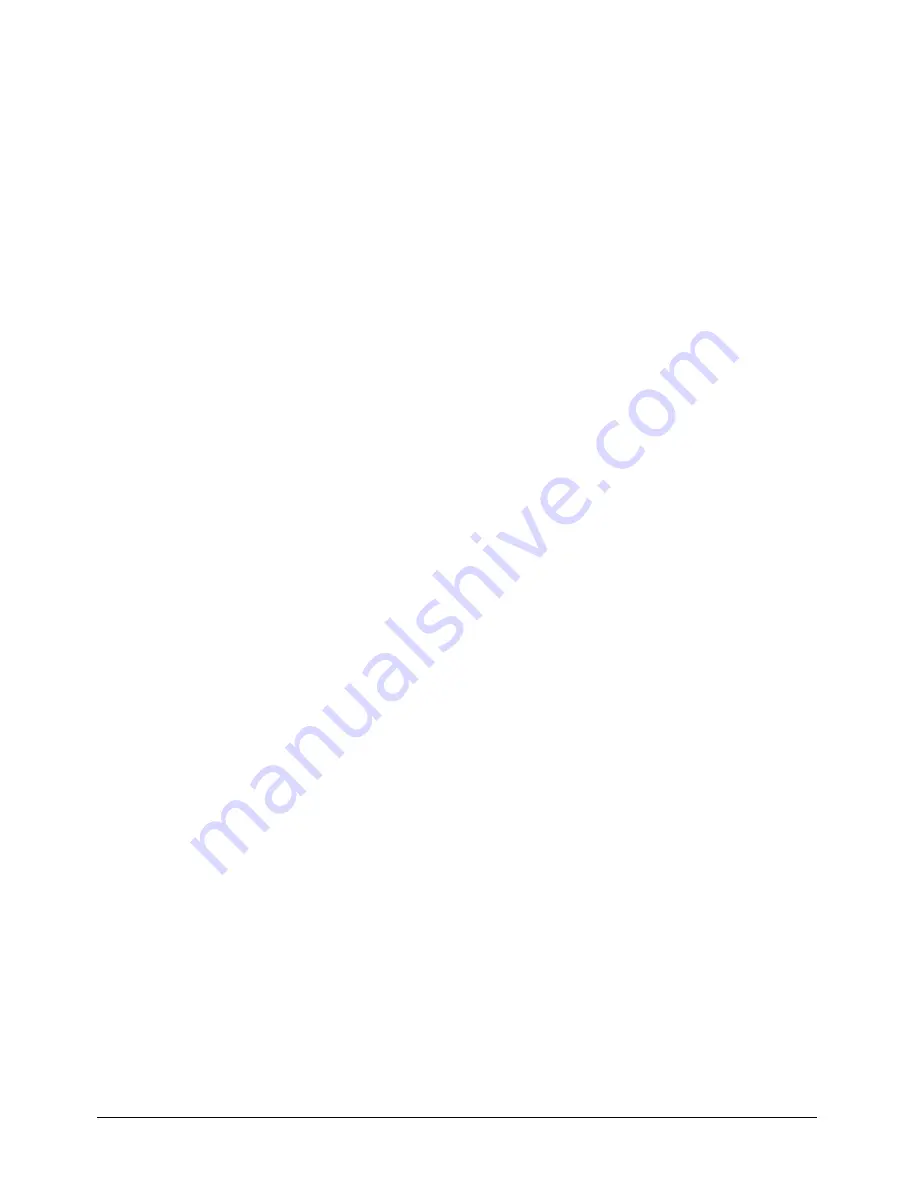
Using Strokes and Fills
179
To apply a custom fill attribute to a selected fill in the Object panel:
1
Select Custom from the fill type pop-up menu.
2
Select one of the following patterns from the custom fill pop-up menu and then specify
its options:
Black & White Noise
applies an opaque, black-and-white fill. It has no options.
Brick
simulates a brick fill. Specify a Mortar color using the color box; brick width and height
values in the document’s unit of measure; and an angle to rotate the fill clockwise (positive
value) or counterclockwise (negative value).
Circles
applies a fill of circles. Specify a radius to change the size of circles, and to set the
spacing between circles as measured from radius point to radius point. To avoid overlapping
circles, set the spacing to more than twice the radius. Enter an angle to rotate the fill clockwise
(positive value) or counterclockwise (negative value).
Hatch
draws lines to simulate pen hatching. Specify a color. Enter Angle 1 and Angle 2 values
to rotate the first and second set of parallel lines clockwise (positive value) or counterclockwise
(negative value). Specify spacing between hatch lines and their width.
Noise
applies a Whiteness value as a percentage from 0% (black) to 100% (white). Larger
Whiteness values result in a noisier fill.
Random Grass
and
Random Leaves
apply a grass or leaf pattern fill. Specify from 1 to 32,000
blades of grass or leaves.
Squares
applies a fill of squares. Set Side Length to change the size of squares in the fill. Set the
spacing between squares as measured from center to center. To avoid overlapping squares, set
Spacing to more than the side length. Enter an angle to rotate the fill clockwise (positive value)
or counterclockwise (negative value), and a stroke width.
Tiger
Teeth
applies a tooth-like pattern. Specify a color and background fill color using the
color boxes. Set the number of teeth, from 1 to 700, to change the fill’s density. Enter an Angle
value to rotate the fill clockwise (positive value) or counterclockwise (negative value).
Top Noise
applies a gray noise value as a percentage from 0% (black) to 100% (white).
Using gradient fill attributes
Gradients apply color in smooth transitions from one color to the next. You can specify two or
more colors to define a gradient ramp. In each of the six gradient types, the gradient starts at the
start point and extends to one or more gradient handles. You can drag the start point and handles
to affect the placement, length, and angle of gradients. Gradient attributes appear in the Object
panel when a gradient fill is selected.
Gradient behaviors affect how a gradient fills an object. In Normal behavior, the position of the
end points determines the length of the gradient. In Repeat behavior, the gradient repeats a
specified number of times. In Reflect behavior, the colors transition from one end of the gradient
ramp and then back, going through one transition for each Repeat count. In Auto Size behavior,
the length of the gradient is set to the exact width and height of the object.
Summary of Contents for FREEHAND MX 11
Page 1: ...Using FreeHand MX Macromedia FreeHand MX...
Page 42: ...Chapter 1 42...
Page 192: ...Chapter 6 192...
Page 232: ...Chapter 7 232...
Page 288: ...Chapter 8 288...
Page 308: ...Chapter 9 308...
Page 340: ...Chapter 11 340...
Page 362: ...Chapter 12 362...
Page 374: ...Chapter 13 374...
Page 388: ...Chapter 14 388...






























